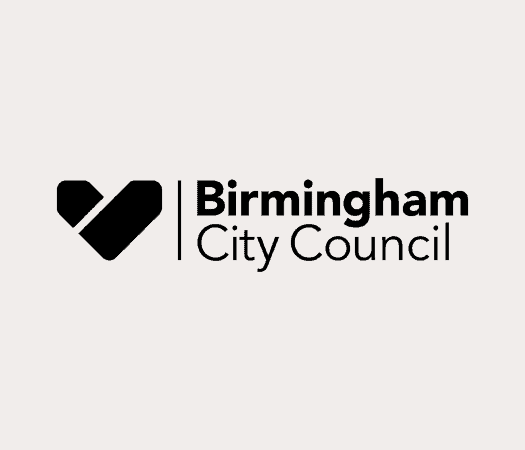The Church of England Cemetery
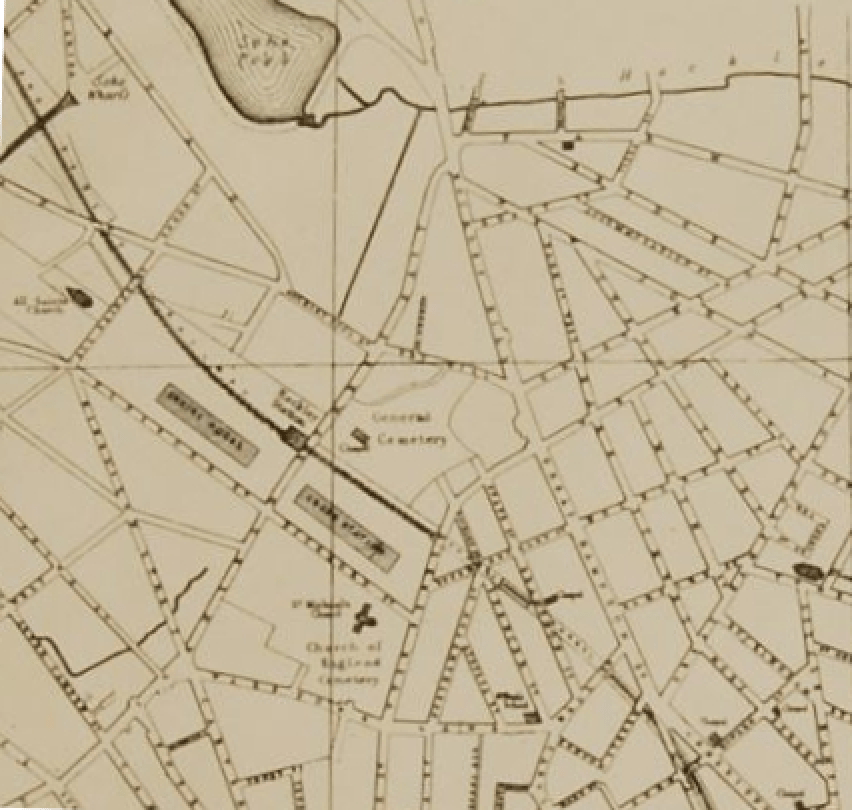
The success of The Birmingham General Cemetery which opened at Key Hill in 1836, went some way to offsetting the shortage of burial space in the city, especially for nonconformists like Baptists and Unitarians, but Birmingham was still growing. The parish churchyards were full to overflowing, their condition causing difficulties for the Church of England authorities.
They decided to follow the example of the nonconformists and open a new cemetery of their own. The site they selected could not have been more perfect – in fact, it was right next door! In 1845, the company purchased land from Sir Thomas Gooch and Richard Vyse which bordered the Birmingham General Cemetery on the north-east side. The site is sometimes known as Brookfields Cemetery, which was the name given to the Gooch estate.
This new cemetery was consecrated on 8th August 1848 by the Bishop of Worcester and was opened for burial in the following week. By December, alongside adverts for the new cemetery, The Church of England Cemetery Company was announcing that the graveyard of St Martin’s church was to be ‘wholly closed against future burials’, as were some sections of the St Philip’s and St Mary’s churchyards. Finally, the Anglican congregations of Birmingham had a green and pleasant place to bury their dead. The shareholders in the cemetery company must have been happy too, with 2000 shares available at £1 each, they were certain to see a good return on their investment.
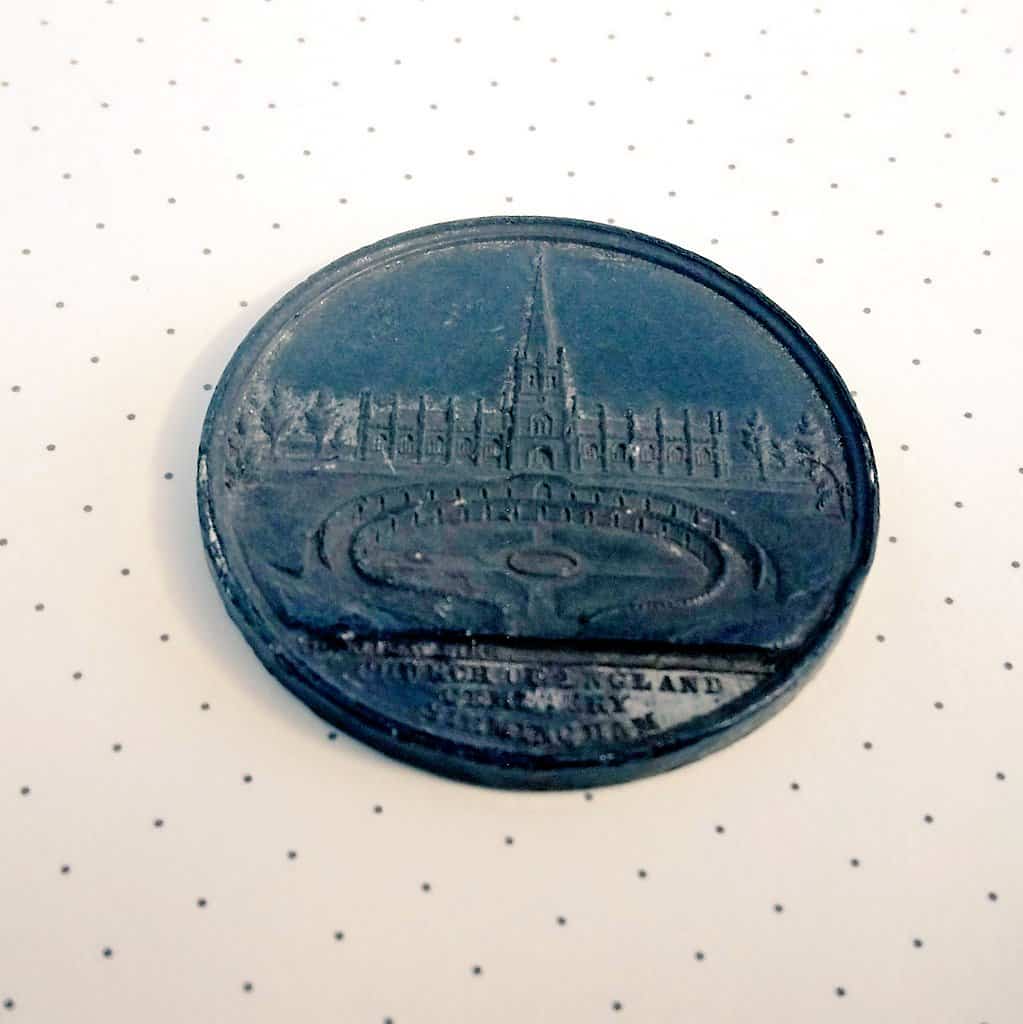
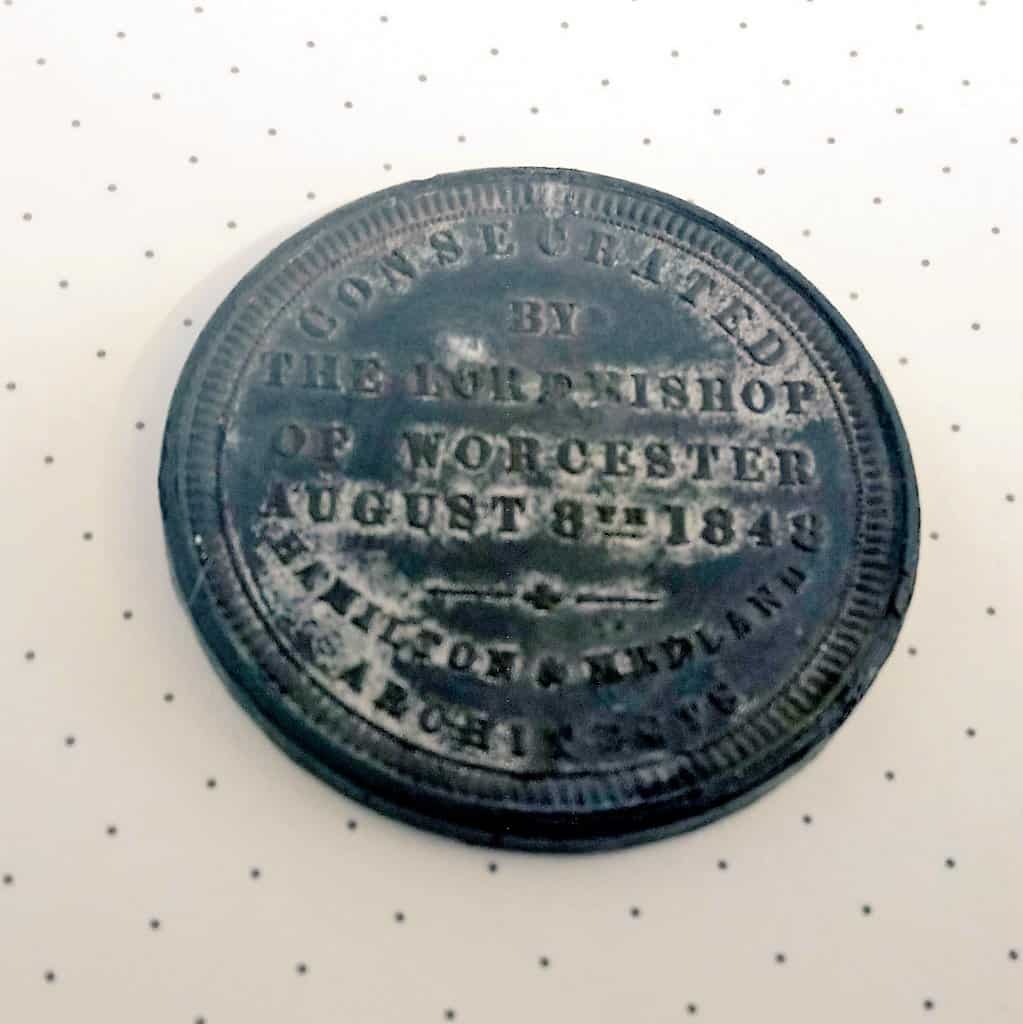
‘A Peaceful Mansion of the Dead’
Although the two cemeteries were neighbours, their theological differences were visually very apparent. Whilst Key Hill had a Neoclassical chapel and gateposts, the directors of the new cemetery appealed for designs ‘in the Saxon or Gothic style of Church architecture’. The Gothic revival was fuelled by the belief that the pagan origins of classical architecture made it unsuitable for Christian buildings, and was encouraged by architects like Augustus Pugin. The chapel, dedicated to St Michael and All Saints, was built with a 116ft spire and stained glass by local firm Chance Brothers. There was a long cloister or ambulatory for quiet contemplation. This chapel was also briefly used as a parish church and must have been a real landmark in the Jewellery Quarter until its demolition in the 1950s, following bomb damage during WWII.
Coffins could be lowered directly from the chapel into the catacombs below using a hydraulic lift. The triple-tiered circular catacombs weren’t fully completed until 1880 and were built into the old quarry face. They are not currently open to the public but were used as air raid shelters and temporary accommodation during WWII. The company offices were originally located in the blue brick cemetery lodge, which is now privately owned.
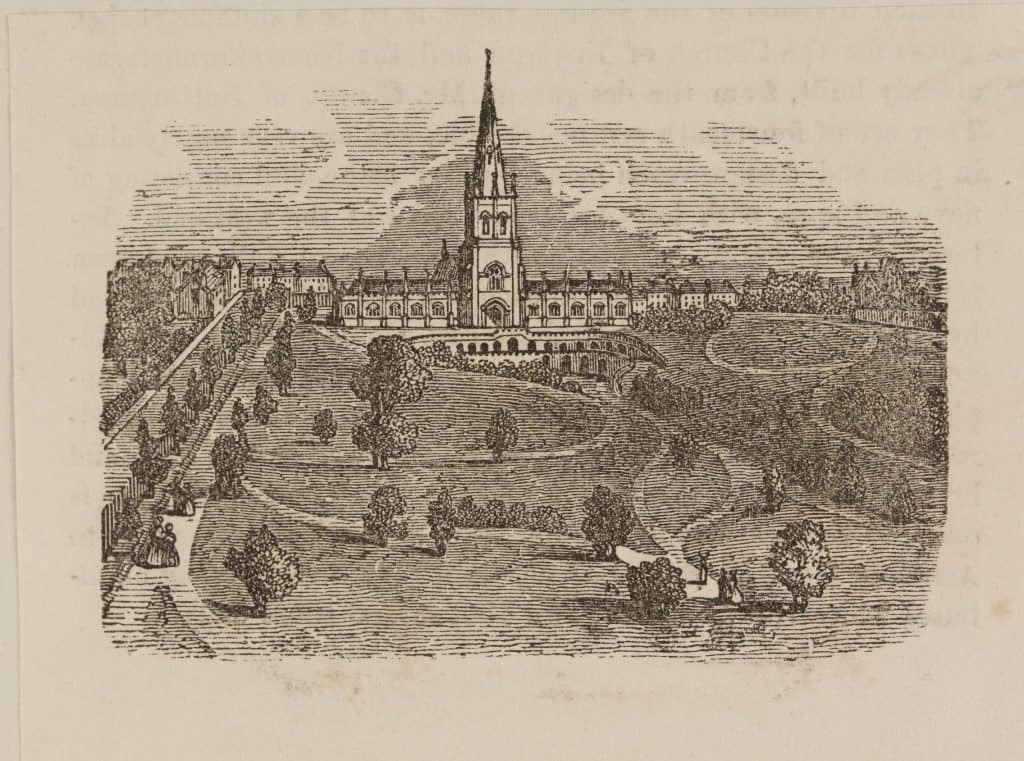
The cemetery was laid out with ornamental plants and trees, Black Poplars lined the main avenue from the lodge to the chapel. These trees are now rare in Britain but were popular in Victorian cemeteries because they were associated with mourning in Greek Mythology. The landscape was grade II listed by Historic England in recognition of its importance and the uniqueness of the catacomb design.

Warstone Lane Today
The once thriving cemetery ran into difficult in the 20th century, as burial space ran out and income fell. Like Key Hill, it was compulsorily purchased by Birmingham City Council and since the 1950s both cemeteries have been managed together. The sad loss of the chapel and boundary railings in the post-war period, along with the clearance and burial of memorial stones at this time are now much regretted. Many community stakeholders including the Friends and Jewellery Quarter Research Trust have worked hard to protect and improve the cemetery in recent years.
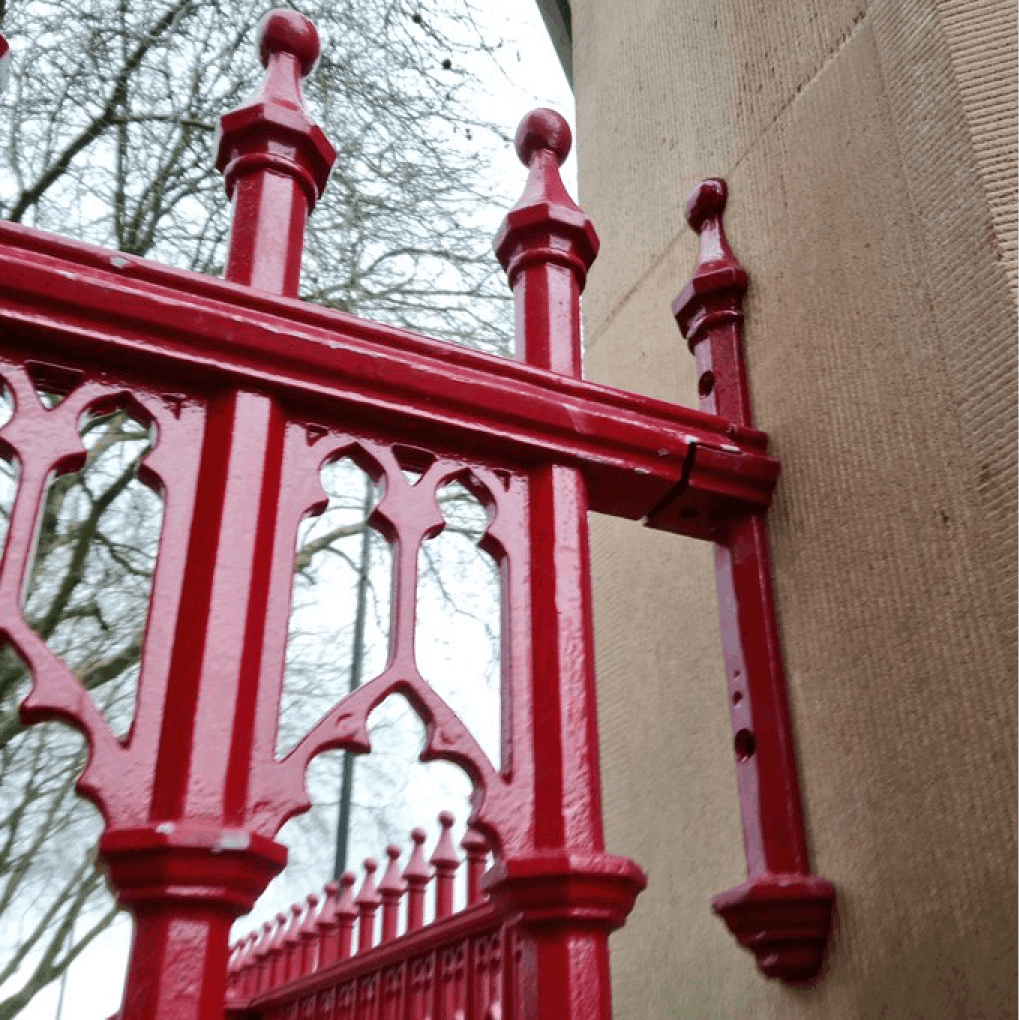
The first stage of the restoration work at Warstone Lane was to reinstate the railings and repair the catacombs, and this phase of the project was completed in January 2020. Work on the pathways and drainage took place during 2020, but due to Covid-19 related delays, the new ‘Garden of Memory’ which was laid out, to mark the former site of the chapel and provide a new community space, was not completed until July 2021.

